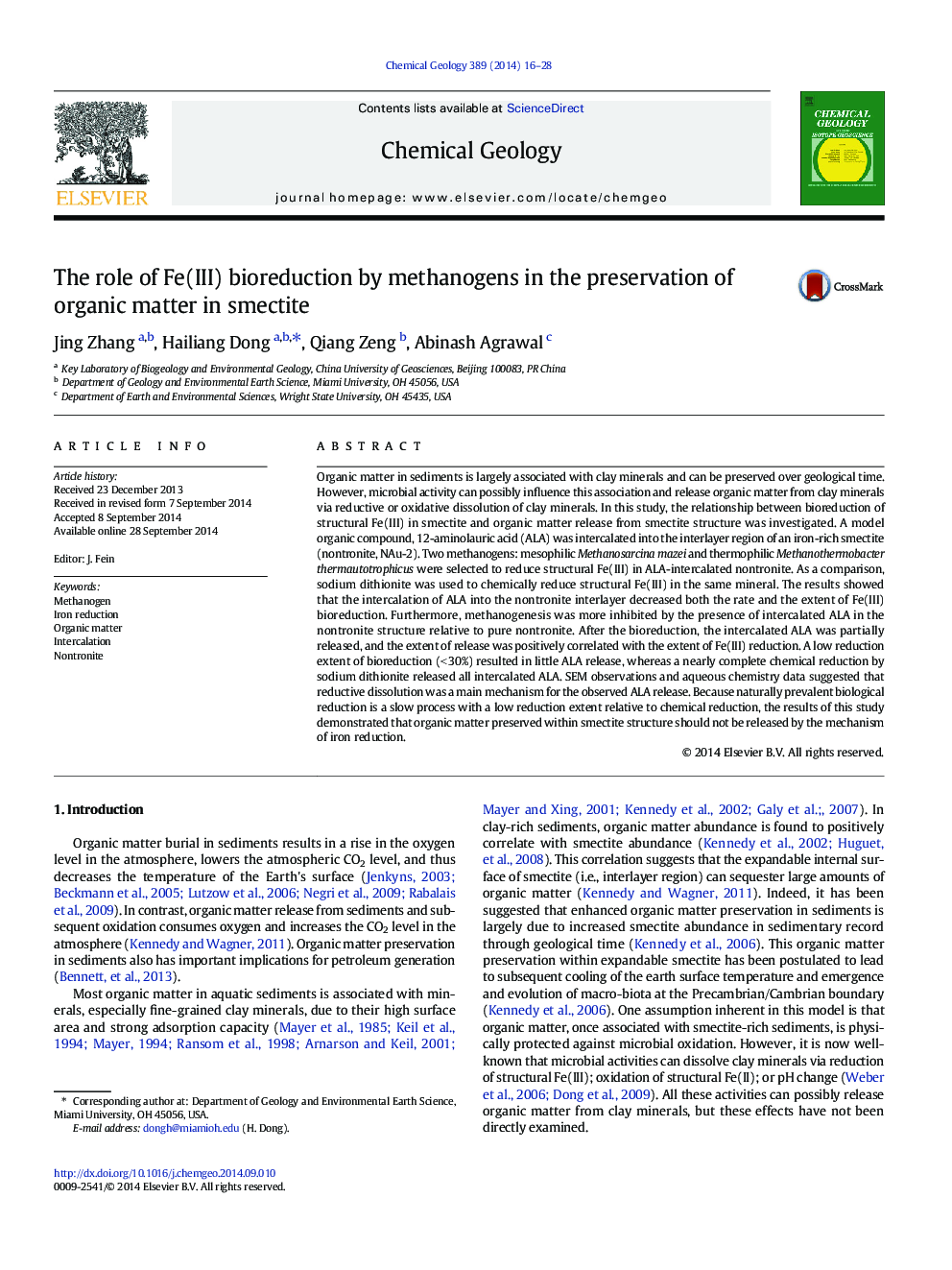| کد مقاله | کد نشریه | سال انتشار | مقاله انگلیسی | نسخه تمام متن |
|---|---|---|---|---|
| 4698635 | 1637583 | 2014 | 13 صفحه PDF | دانلود رایگان |

• The intercalation of organic matter in the nontronite interlayer lowers Fe(III) bioreduction.
• Bioreduction of Fe(III) in nontronite does not result in release of intercalated organic matter.
• Organic matter release is positively correlated with Fe(III) reduction extent.
• The mechanism of organic matter release from nontronite structure is via reductive dissolution.
• Bioreduction of Fe(III) inhibits methanogenesis.
Organic matter in sediments is largely associated with clay minerals and can be preserved over geological time. However, microbial activity can possibly influence this association and release organic matter from clay minerals via reductive or oxidative dissolution of clay minerals. In this study, the relationship between bioreduction of structural Fe(III) in smectite and organic matter release from smectite structure was investigated. A model organic compound, 12-aminolauric acid (ALA) was intercalated into the interlayer region of an iron-rich smectite (nontronite, NAu-2). Two methanogens: mesophilic Methanosarcina mazei and thermophilic Methanothermobacter thermautotrophicus were selected to reduce structural Fe(III) in ALA-intercalated nontronite. As a comparison, sodium dithionite was used to chemically reduce structural Fe(III) in the same mineral. The results showed that the intercalation of ALA into the nontronite interlayer decreased both the rate and the extent of Fe(III) bioreduction. Furthermore, methanogenesis was more inhibited by the presence of intercalated ALA in the nontronite structure relative to pure nontronite. After the bioreduction, the intercalated ALA was partially released, and the extent of release was positively correlated with the extent of Fe(III) reduction. A low reduction extent of bioreduction (< 30%) resulted in little ALA release, whereas a nearly complete chemical reduction by sodium dithionite released all intercalated ALA. SEM observations and aqueous chemistry data suggested that reductive dissolution was a main mechanism for the observed ALA release. Because naturally prevalent biological reduction is a slow process with a low reduction extent relative to chemical reduction, the results of this study demonstrated that organic matter preserved within smectite structure should not be released by the mechanism of iron reduction.
Journal: Chemical Geology - Volume 389, 11 December 2014, Pages 16–28